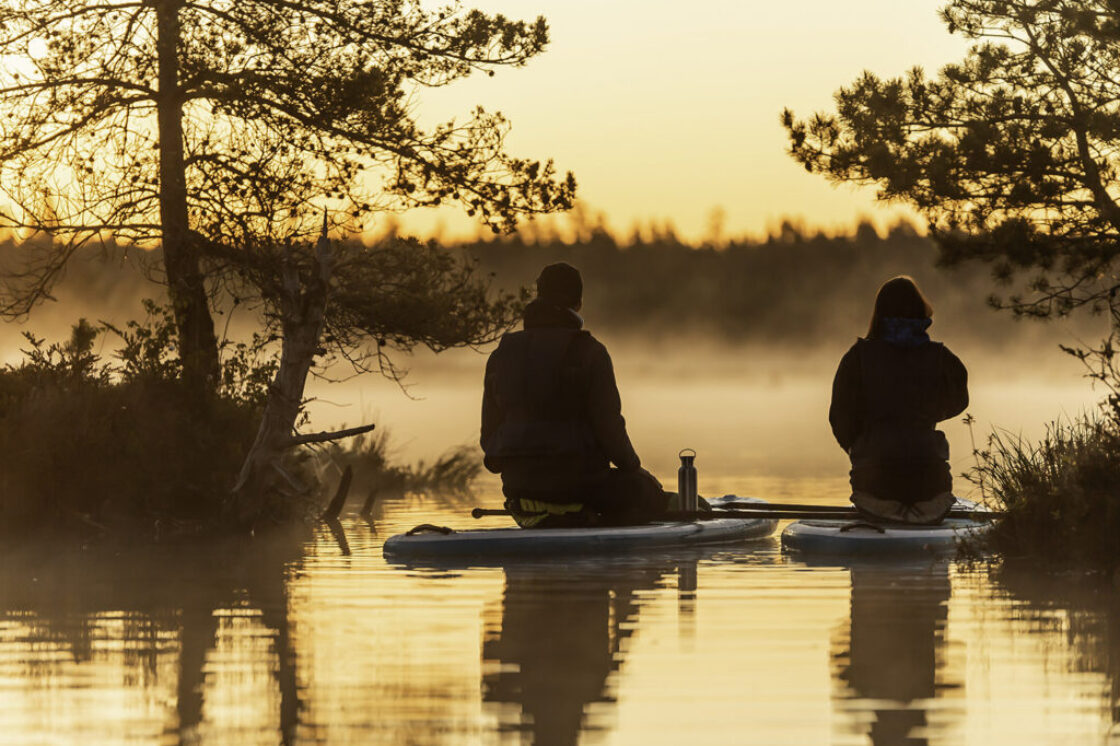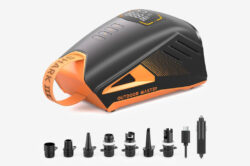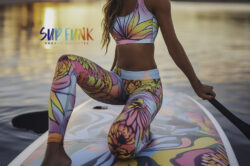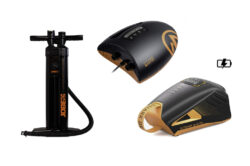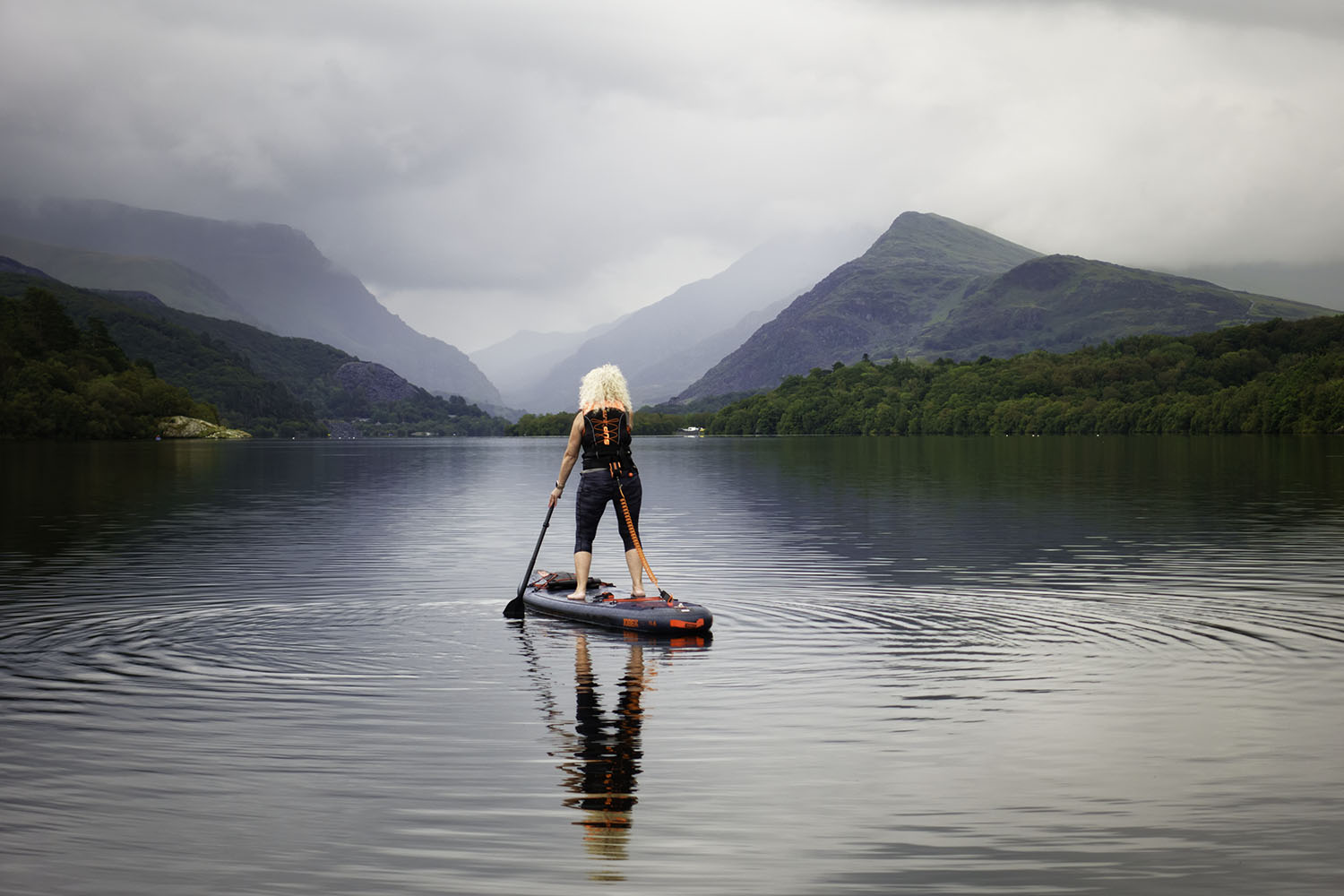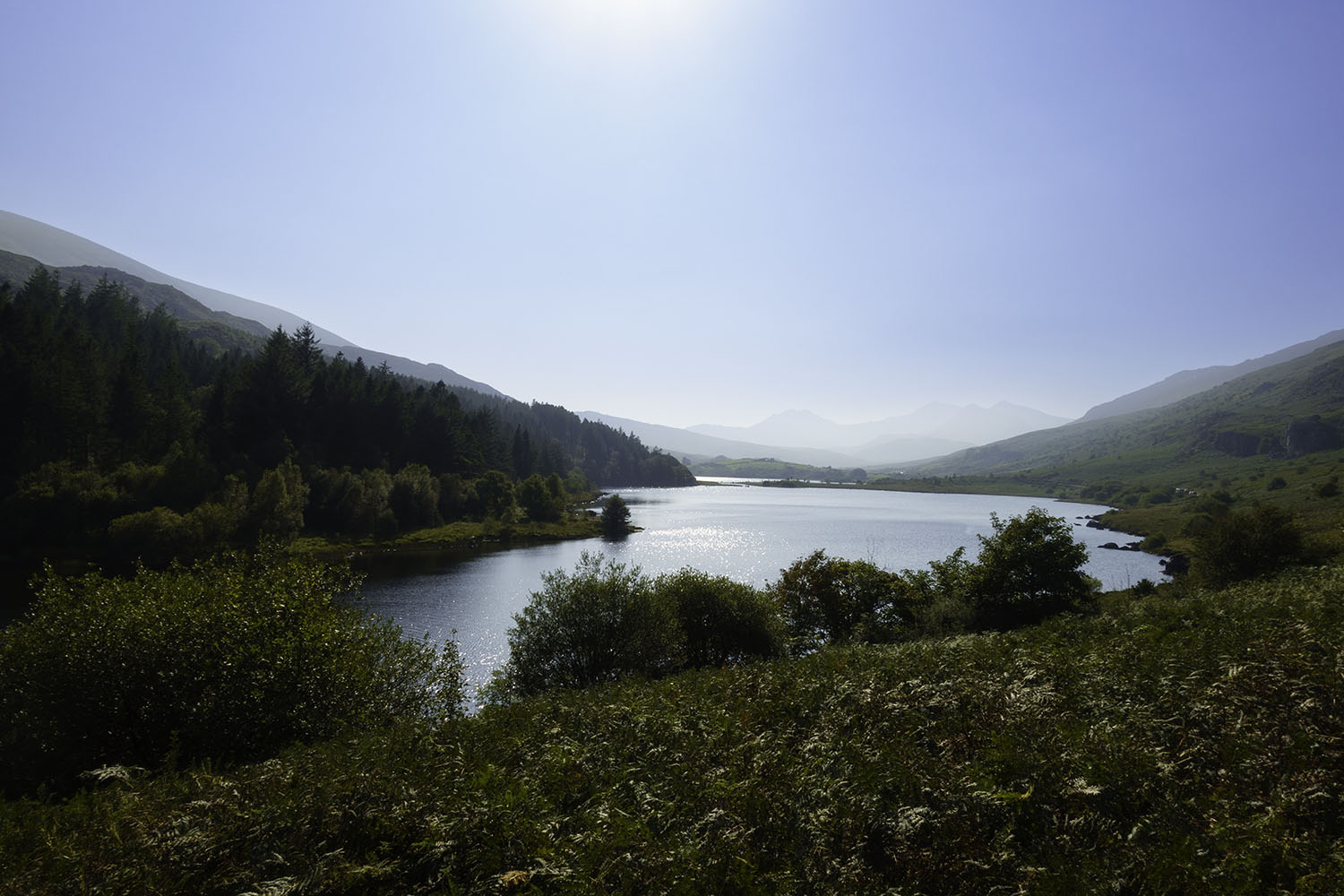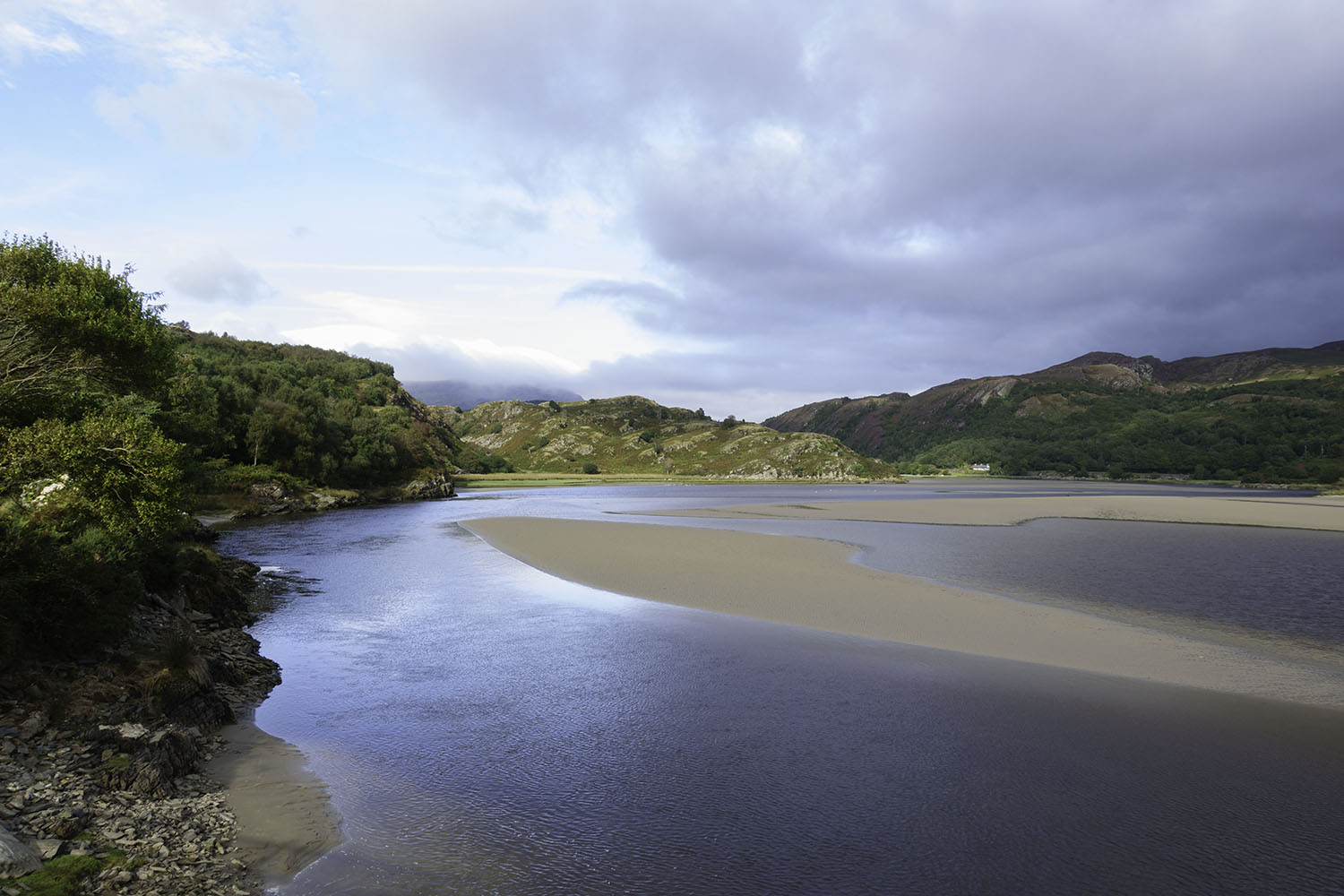Cold weather shouldn’t stop you from enjoying stand up paddleboarding! In fact, paddling in crisp, cool conditions has its own charm with quiet, uncrowded waters, breathtaking winter landscapes, and that fresh invigorating air. But let’s be real, staying warm is essential when you’re out there. One wrong move like falling in without the right attire and a fun outing can quickly turn into a freezing disaster.
From our own experience, we’ve learned that layering is the key to keeping warm, comfortable and safe while paddle boarding in cold weather. In this guide we will share the smart winter clothing strategies we’ve developed over the years so you can enjoy cold weather SUPing without turning into an icicle.
Why Layering is Essential for Cold Weather SUP
When you’re paddleboarding in cold weather your body is exposed to wind, water, and the chilly air, all of which steal your body heat. To stay warm you need to control your body temperature while preventing moisture from cooling you down. Layering different types of clothing helps with all of this.
It’s not just about piling on clothes; it’s about choosing the right combination of layers that work together to wick away moisture, insulate your body, and protect you from the elements.
Let’s break down the three main layers, the base layer, mid-layer and outer layer. Each one has a specific job and when chosen wisely, they create the perfect shield against the cold.
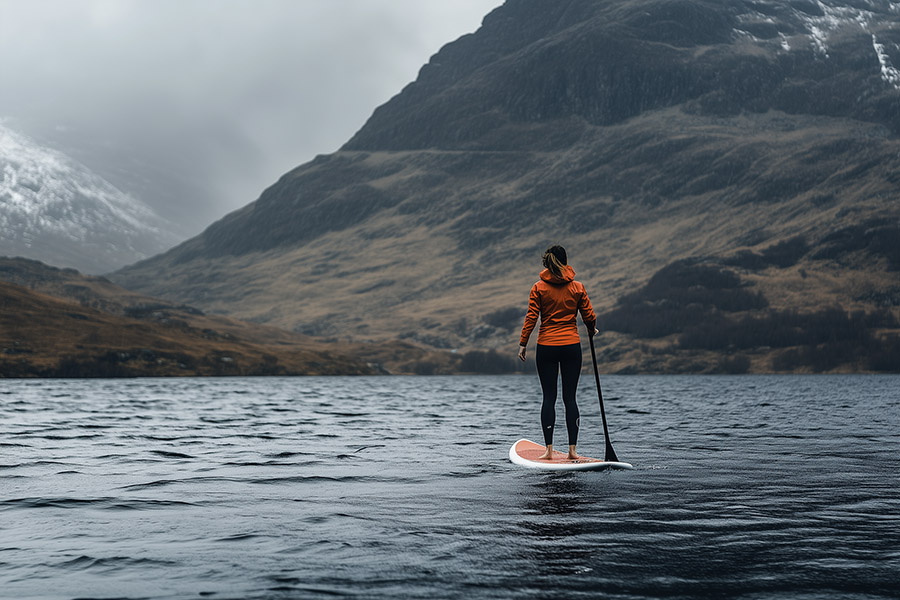
The Base Layer: Your First Line of Defense
Purpose of the Base Layer
Your base layer is all about moisture management. When you’re paddling, you’re bound to work up a sweat even when it’s cold. If that sweat stays on your skin, it’ll cool you down fast, which is not what you want in chilly weather! The base layer wicks moisture away from your skin, keeping you dry and comfortable.
Materials to Look For
We highly recommend materials like merino wool or synthetic fabrics (like polyester or polypropylene) for your base layer. Merino wool, in particular, is a lifesaver, it’s soft, moisture-wicking, and has natural odour-fighting properties. Synthetic fabrics are also great because they dry quickly and are more affordable but they tend to retain odours.
Why It’s Important
We once made the rookie mistake of wearing a regular cotton shirt as a base layer on a cold morning paddle. After 30 minutes of paddling, we were sweating, and our cotton shirts just absorbed it all. A cold wind can quickly turn a soggy shirt into a cool pack making it very difficult for the body to regulate body temperature, very uncomfortable. Lesson learned: cotton is not your friend when it comes to cold-weather paddling. Always go for moisture-wicking materials.
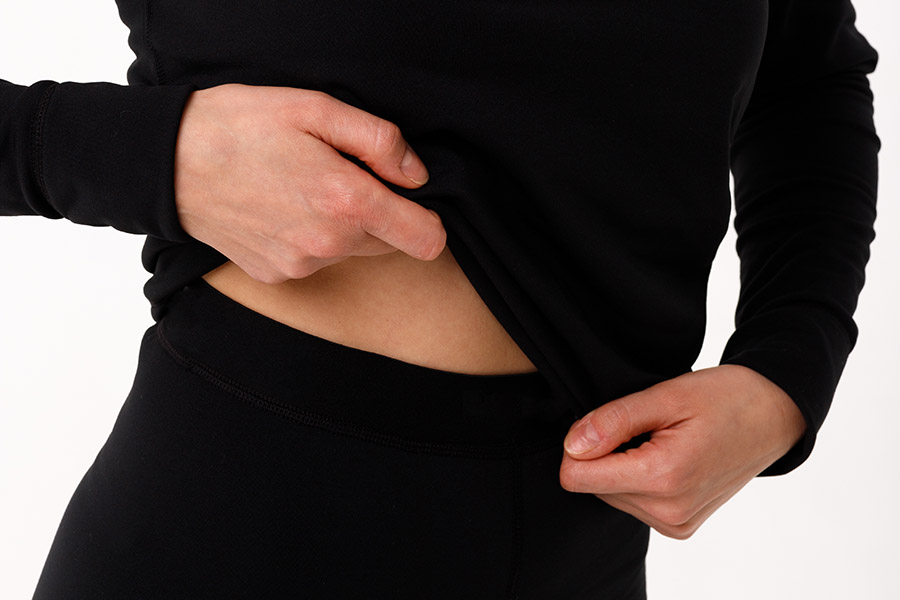
The Mid-Layer: Insulating Your Core
Purpose of the Mid-Layer
This is your warmth layer. The mid-layer traps body heat and insulates your core, which is crucial for keeping your internal temperature stable. Without a good mid-layer, you’ll lose heat faster than your body can produce it, especially when exposed to wind and water.
Materials to Look For
For the mid-layer, we prefer fleece or insulated synthetic fabrics. These materials are lightweight yet provide excellent insulation. If you’re paddling in really cold conditions, consider down insulation paired with a dry suite, but be aware that down can lose its warmth when wet, so pairing it with a good outer layer is crucial. It is also a pain to dry and can dry clumpy leaving cold unprotected areas in the clothing. Down is more for the experienced paddler in good conditions where a dip is fairly unlikely.
Importance of the Mid-Layer
The first time we paddled in the dead of winter, we underestimated how cold the wind could feel once we were out on the water. Core body temperatures drop quickly, and we spent most of the session shivering. A mid-layer, like a good fleece pullover, would’ve made all the difference. Now, we never leave without one. Even on warmer days, we bring a mid-layer because weather conditions can change unexpectedly especially in the evenings as the sun drops.
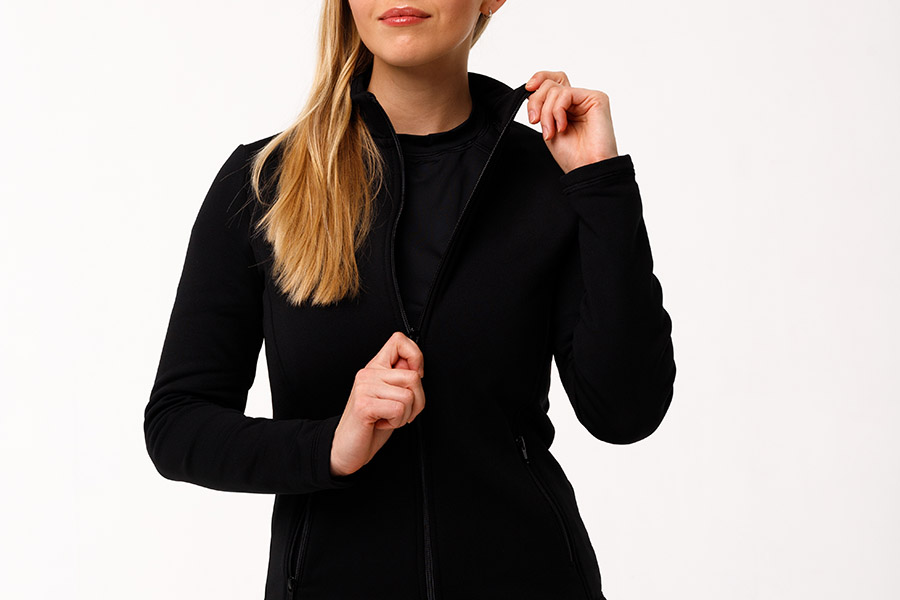
The Outer Layer: Shielding from the Elements
Purpose of the Outer Layer
Your outer layer is all about protection from wind, water, and the cold air. It’s your shield against the elements. You want something waterproof, windproof, and breathable, so it keeps the harsh conditions out while allowing your body heat to escape, preventing you from overheating.
Materials to Look For
Look for materials like neoprene, Gore-Tex or other waterproof and windproof fabrics. These materials are designed to keep water and wind at bay while remaining breathable. The key here is to ensure that your outer layer is flexible enough to allow movement. Paddleboarding requires freedom of movement, so avoid stiff jackets.
Why It’s Crucial
We remember when we first started paddling on a day when the wind was much stronger than expected. While we had layered well underneath, we didn’t have a sufficient windproof jacket. The wind cut through the layers like they weren’t even there. It wasn’t until we invested in a high-quality windproof jacket that we realised how much easier and more enjoyable it is to paddle in cold, windy conditions. Now, our waterproof, windproof jacket is one of the most essential pieces of gear we use.
Here in the UK weather can be unpredictable especially in spring and summer months. Even during summer the air temperature may not be cold but a Northern wind can carry a chill and then there is the rain. A good outer layer jacket can be used all year round and can be thrown on in times of need and be a great investment.
Don’t forget your legs and a good pair of leggings are essential in colder temperatures and the same applies as for jackets.
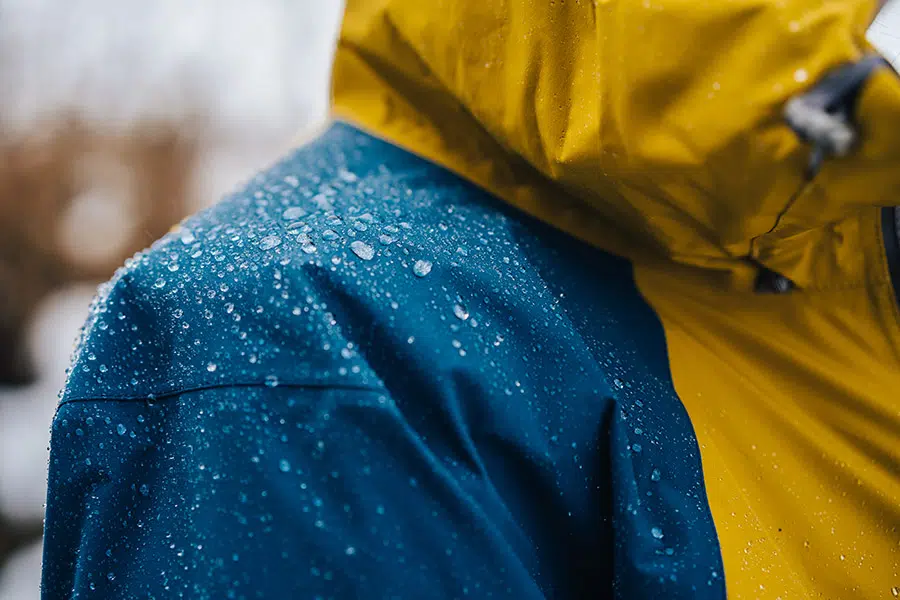
Head, Hands, and Feet: Protecting Extremities
Why Extremities Matter
Your hands, feet, and head are the most vulnerable to the cold. If your extremities are cold, it’s hard to focus on anything else, no matter how good your core layers are. Plus, when you’re paddling, your hands are constantly exposed to the wind, and your feet will be in contact with cold water.
Headgear
A hood or thermal beanie is a game-changer when the wind picks up. We personally like using a snug-fitting beanie that stays secure when paddling. A hood can be a great option if it’s windy or if there’s a chance of falling in cold water.
Gloves
Cold hands can ruin a paddling session in minutes. We’ve had days where hands felt like they were freezing to the paddle, and once they’re cold, it’s almost impossible to warm them up on the water. Neoprene gloves or insulated paddling gloves are must-haves. Look for gloves that provide warmth while still allowing you enough dexterity to grip the paddle comfortably.
Footwear
Your feet are exposed to water, so you need neoprene booties and thermal socks. We recommend boot with at least 3mm thickness for colder water. Make sure they’re snug enough to prevent water from seeping in but comfortable enough for all-day wear.
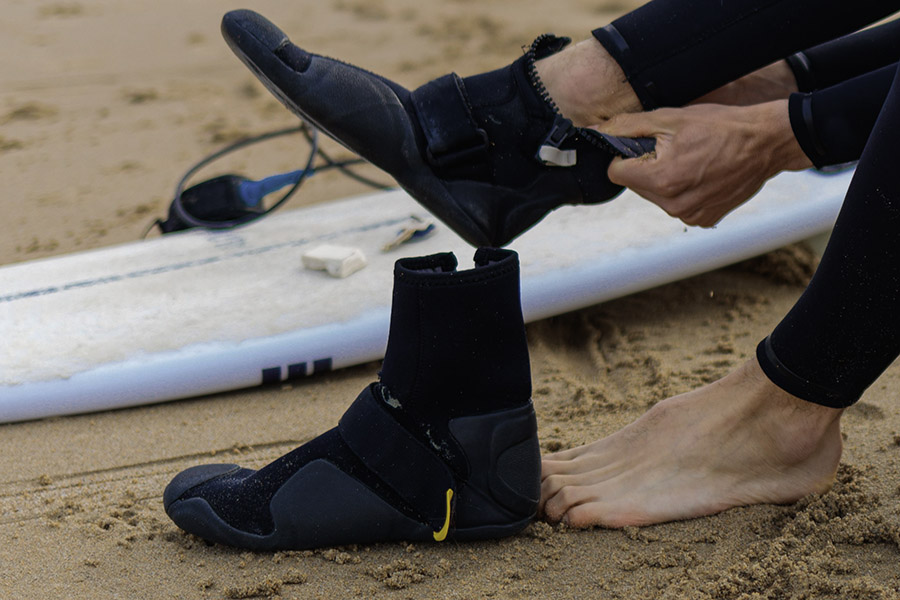
Additional Tips for Cold-Weather SUP
Paddling Techniques to Stay Warm
Keep moving! One of the best ways to stay warm is to paddle consistently. If you stop for too long, your body starts to cool down. We like to start our cold-weather paddling sessions with a steady, moderate pace to get the blood pumping.
Pack Extra Layers
Always bring extra layers. We keep a dry bag with an additional base layer, gloves, and socks, just in case we need to switch out wet or damp clothing. This also comes in handy if the weather shifts or you stay out longer than expected.
This is the benefit of layering where you can swap and change to match the conditions.
Hydration and Nutrition
It’s easy to forget about hydration in cold weather, but your body needs water just as much as in the heat. Drink regularly and keep your energy up with snacks. When we’re on a longer cold-weather paddle, we like to pack energy bars or nuts to keep the body fueled and a nice small flask of tea or coffee.
Safety Precautions
Cold weather can bring unexpected dangers, like hypothermia. Know the signs: shivering, slurred speech, or confusion are red flags. Always let someone know where you’re paddling, and have a plan in place to get off the water quickly if the weather worsens.
There is more to cover on the subject of clothing in cold weather such as the old favourite of Wetsuit vs Drysuit. In our opinion drysuits are better for cold weather paddling and we will cover this in more detain in another article.
Coming Soon
We are currently working on our own designs specifically tailored for paddle boarding which will be available in 2025 so subscribe to our news letter for updates and to be notified when they are available.

